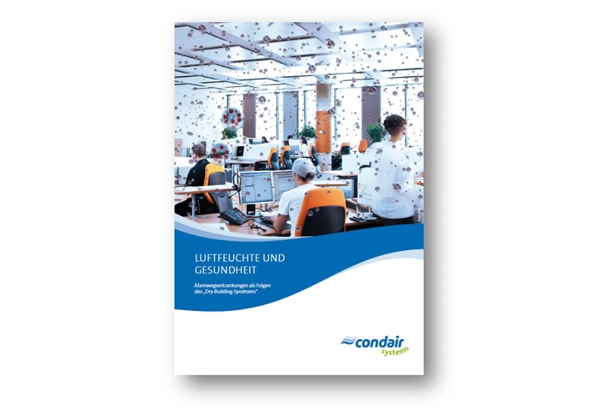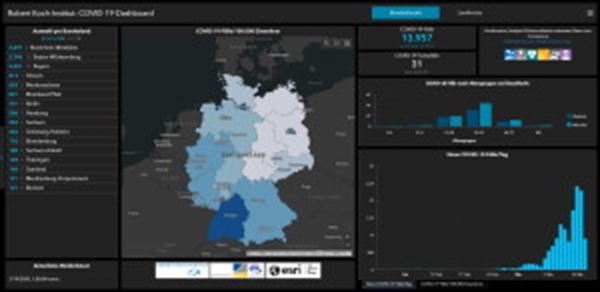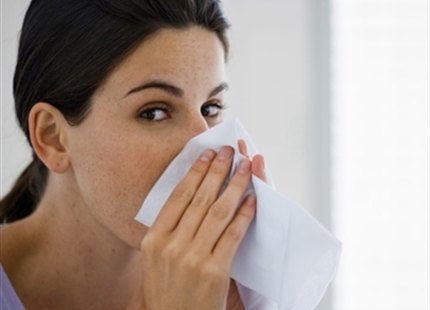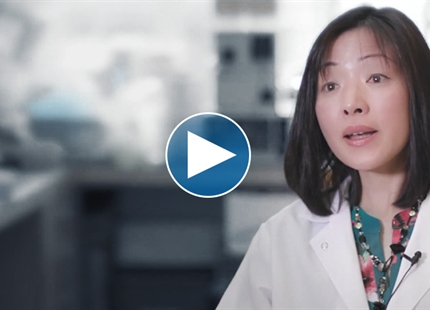

Author:
Dr. med. Walter Hugentobler
Consultant for General Internal Medicine

Whitepaper "Dry Building Syndrom"
A 10-page whitepaper about air humidity and health.
Norderstedt, February 2020
As a supplementary measure to the current responses to the 2019 coronavirus pandemic, humidification in hospitals would further reduce the risk of the virus spreading
Four eventful weeks have passed since the Chinese public health agency notified the World Health Organisation that multiple cases of pneumonia-like symptoms had occurred in the metropolis of Wuhan, caused by an unknown pathogen. In a short space of time, official figures for hospital cases and deaths have risen rapidly. The spread of the pathogen—now identified as a new type of coronavirus—by air travel has led to the same kinds of cases on a global scale. On 30 January 2020, the WHO declared the new virus to be a public health emergency of international concern (PHEIC).
The Chinese health authorities responded quickly to the escalation in new infections and deaths, and have also been working closely with the WHO. The draconic travel embargoes now affecting the movement of over 50 million people pay tribute to the seriousness with which authorities are treating this disease. This is the first time such steps have been taken in the history of modern epidemic and pandemic control. As of this writing, both the effects and side effects of these truly dramatic measures cannot yet be fully estimated.
The new coronavirus, termed SARS-CoV-2, is closely related to the SARS virus, and its genome has already been sequenced and made publicly available. Laboratories around the world have used this information to develop tests to detect the virus. The virus is thought to have crossed over to humans in an outdoor meat market in Wuhan, where live wild animals are also sold. The virus is now able to spread by human-to-human transmission. Some of those infected develop flu-like symptoms such as coughing and breathing difficulties. Chest X-rays reveal cases of untreatable pneumonia that may ultimately prove fatal. If the current pandemic is compared with the SARS pandemic in 2002/2003, one discomfiting characteristic is the fact that the current coronavirus spreads faster in terms of both time and geography.
By combining the results of research studying the resistance of SARS-CoV-2 to humidity and temperature with data from the SARS pandemic and MERS epidemics (themselves also caused by coronaviruses), we can obtain some interesting new insights. Both the original cross-species transmission from animal to human as well as current human-to-human transmission appear to be respectively enabled or blocked by characteristic combinations of humidity and air temperature. Coronaviruses are known to spread easily within wild mammal and bird populations in particular. In China, such animals are also domesticated, and then sold live in outdoor ‘wet’ markets for subsequent slaughter and consumption.
The survival periods for SARS and MERS coronaviruses on inanimate surfaces and as infectious airborne droplets have been investigated. An identical pattern is revealed in each case: very low temperatures and very low levels of humidity promote long survival periods for the viruses, both on surfaces and in the air. Even at moderate temperatures of 20–30 °C, survival periods were also long—but only if the air was dry. Coronaviruses are inactivated by very high temperatures (>30 °C). This is the reason why the MERS epidemics on the Arabian Peninsula were cyclical, with outbreaks occurring only in the cooler winter months. The current 2019 coronavirus is also expected to exhibit a similar pattern of behaviour in terms of both humidity and temperature.
Interspecies transmission has to take place in an open space where animals are present and where people can come into contact with them. Transmission of the virus from person to person occurs where people spend the vast majority of their lives, and where they meet and socialise, namely almost exclusively in enclosed spaces—in buildings and when using public transport. We should also remember that climatic conditions indoors and outdoors will differ significantly in cases where buildings are heated because of low temperatures outside. This results in comfortable temperatures for humans of 20–24 °C but unnaturally low relative humidity.
Why are conditions for coronavirus transmission ideal in the winter months in central and southern China? (See figure.) In China, wintertime temperatures in the outdoor market stalls used to sell meat are very low and perfect for animal-to-human transmission. As we have seen above, the ease of human-to-human transmission will depend decisively on climatic conditions indoors. In central and southern China, outside temperatures in winter are low, making it necessary for buildings to be heated. As a result, temperatures in households and on public transport are between 20 and 24 °C, and the relative humidity in heated spaces indoors ranges from a low of 20 to a maximum of 40 percent. For SARS coronaviruses, these are ideal climatic conditions to ensure their long-term survival on surfaces and in the air, and therefore to facilitate airborne or contact infections.
While the climatic conditions outside that could enable inter-species transmission are not subject to our control, we humans are responsible for our indoor air quality. We are able to adjust the key factors of temperature, humidity, air exchange rate and fresh air volume to our specific requirements. Since our ‘comfort zone’ is predefined at about 20 to 24 °C, we have to use relative humidity and ventilation to influence the risk of infection in buildings. Using humidification to raise the low levels of relative humidity indoors to about 50 percent works to reduce the risk of transmission. Increasing the air exchange rate and the proportion of fresh air in room air also helps to reduce this risk further.
Air humidification can work proactively against the spread of viruses by carriers—including those known as ‘super spreaders’—even before symptoms appear or a diagnosis of the infection has been made. The humidified air also positively improves respiratory conditions in healthy people by ensuring more efficient cleaning of the airways and an improved immune response. Raising excessively low levels of humidity indoors as a preventive measure in wintertime offers a low-cost and cost-effective means of reducing the risk of viral spread while also being free of any side effects. Since around 58 percent of all SARS cases occurred due to transmission in hospitals, a disproportionately larger positive effect is to be expected from introducing humidification here. However, humidification also has a part to play in public buildings, and in both private households and offices. As something generally available to the public, air humidification offers a simple way to create an indoor climate that makes it more difficult for pathogens to spread.

Spread of the coronavirus

Air humidification for better health

March 2019: A review of the current Literature about Coronavirus
